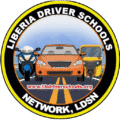About Us
Welcome to The Driving Schools of Liberia
MOTTO: “Uniformity in Training delivers Uniformity in results”
Who We Are
"Our mission is to transform driver education across Liberia by uniting all driver”


Anything less, Liberia will remain and continue to degenerate its human capital by daily deaths, fatal injuries, and miserable poverty.
Our collative mission statement condenses several key elements:
- Embrace unity and standardization by bringing all driver training institutions together under one organized and consistent system.
- Embrace quality and Innovation to highlight the commitment of using evidence-based and innovative training methods
- Embrace empowerment and accountability to focus on ensuring that every driver is educated to uphold safe driving practices and is accountable for their performance.
- 4. Seek sustainable impact. It directly addresses the ultimate goal—reducing fatalities and making a tangible improvement in road safety across Liberia
OUR VISION STATEMENT OF LDSC
“To revolutionize driver education in Liberia by setting a unified, world-class standard that empowers every driver with exceptional skills, instills lifelong road safety values, and transforms our roads into safer, thriving corridors for progress and prosperity.”
Our vision statement represents our ambition to be a vehicle for change—fostering a culture of excellence, accountability, and continuous improvement. It envisions a future where standardized, high-quality training drastically reduces accidents and inspires innovations in road safety not just for Liberia, but as a benchmark for similar initiatives globally.
LIBERIA DRIVER SCHOOLS COLLABORATION
WHY THE FORMATION OF THE LIBERIA DRIVER SCHOOLS COLLABORARION?
The formation of the LIBERIA DRIVER SCHOOLS PARTNERSHIP, LDSP is driven by an urgent need to tackle several deep-rooted challenges in Liberia’s road safety landscape
The LDSP aims to be a transformative force, addressing not only the technical aspects of driver training but also promoting a culture of safety and responsibility on the roads.
It’s a strategic move designed to save lives, reduce economic burdens, and lay the foundation for safer travel in Liberia. Here are some crucial reasons for this partnership.
- Standardization of Training:
Currently, driver education across Liberia likely varies in quality and consistency. By uniting diverse training outlets under one comprehensive network, standardized curricula and uniform best practices can be implemented. This ensures every driver—especially those in the corporate sector—receives thorough and consistent instruction, which is vital for reducing risky driving behaviors.
- Reduction of Road Accidents:
With Liberia having one of the poorest driving records and alarmingly high accident-related fatalities (with at least six deaths daily), the establishment of the network can lead the charge in revamping driver competence. A unified training oversight system means that drivers will be more prepared to navigate challenging conditions, understand defensive driving techniques, and react effectively in emergencies, all of which can significantly reduce accident rates.
- Enhanced Accountability and Monitoring:
Relying on a fragmented system makes it difficult to enforce accountability across independent training centers. A network facilitates centralized monitoring, allowing for consistent evaluations, performance metrics, and regular audits. This makes it easier to identify deficiencies and ensure all training centers adhere to strict quality standards.
- Collaboration and Continuous Improvement:
The network isn’t just about regulation—it’s also a platform for collaboration. It enables the sharing of innovative training methods, success stories, and the latest research on road safety. Regular workshops, peer reviews, and curriculum updates can help maintain the training’s relevance and effectiveness, ensuring that Liberia’s driving education evolves with global best practices.
- Economic and Social Benefits:
Fewer road accidents mean reduced strain on healthcare, emergency services, and public resources. The reduced loss of life and injuries directly translates to improved public safety and savings in economic costs associated with crash aftermaths. Additionally, a safer road environment can boost investor confidence, enhance productivity, and elevate national reputation on multiple fronts.
- Influence on Policy and Regulations:
Data gathered from a centralized network serves as a potent tool for policymakers. By providing concrete evidence on training outcomes and accident trends, the network can drive legislative and infrastructure reforms. This evidence-based approach can lead to more effective road safety laws and regulations, fostering a holistic improvement in the transportation ecosystem.
